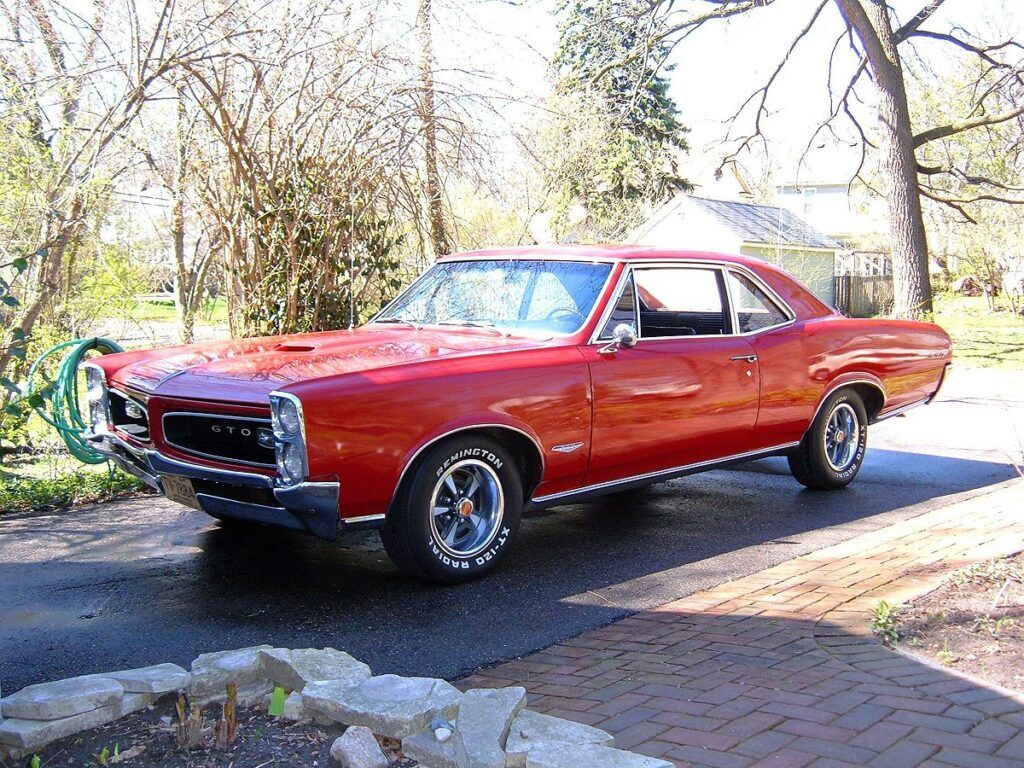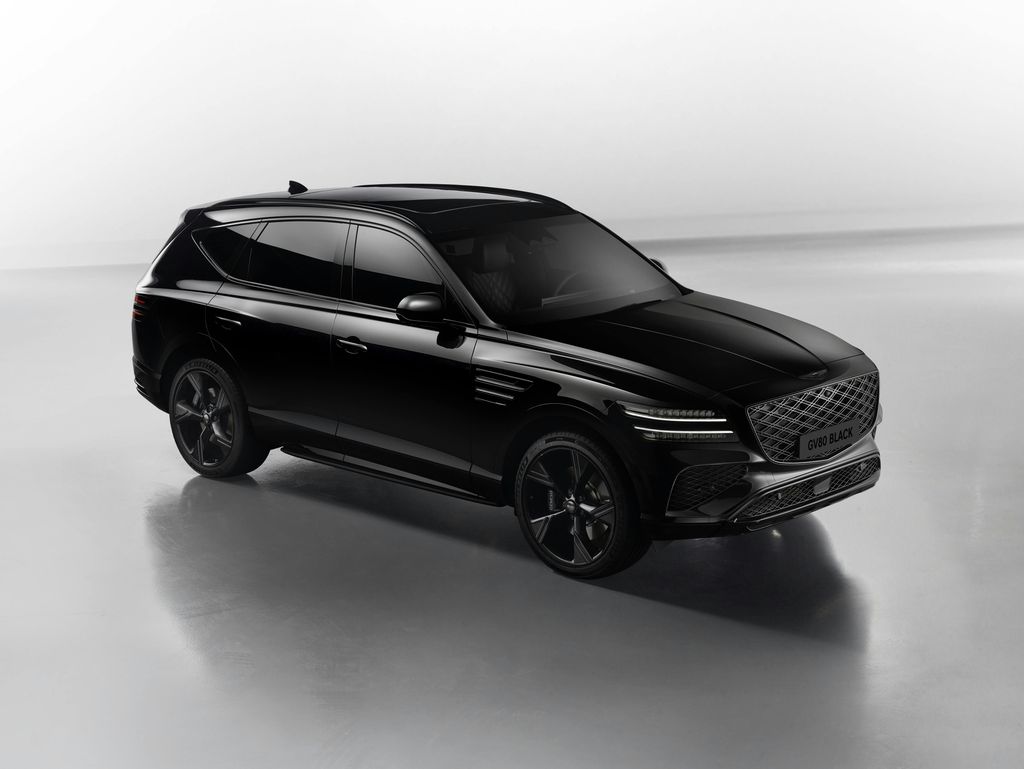
The 1970s was a truly fascinating and transformative decade in automotive history, a period marked by an extraordinary blend of audacious designs, raw power, and groundbreaking innovation. Far from being just a collection of “old cars,” many of these models have blossomed into prized collectibles, each one a tangible piece of history that continues to captivate enthusiasts and command jaw-dropping prices at auctions and in private sales. These vehicles offer far more than simple transportation; they embody a golden era when cars were designed not just for utility, but to make a statement, dominate the road, and stir the soul.
This era, despite facing challenges like the oil crisis and increasingly stringent emissions regulations, saw car manufacturers relentlessly push the boundaries of engineering and design. The unique confluence of power, style, and regulatory shifts ultimately resulted in some of the most memorable and, crucially, rare cars ever produced. Their enduring value isn’t merely about scarcity; it’s about their unique ability to encapsulate the very essence of a time when the automobile was a profound cultural icon.
Today, we’re taking a deep dive into some of the most sought-after and expensive classic cars to emerge from the 1970s. We’ve meticulously curated this list by examining the highest confirmed sales prices on Classic.com, alongside other reputable auction results and market analyses from leading automotive publications. Prepare to explore a collection of legendary machines whose rarity, distinctive styling, and compelling backstories have sent their values skyrocketing, proving unequivocally that some things truly do get better, and more expensive, with age.

1. **1970 Plymouth Hemi ’Cuda Convertible**Few cars manage to capture the sheer drama and unbridled spirit of 1970 quite like the Plymouth Hemi ’Cuda drop-top. This isn’t just a car; it’s a roaring legend, an automotive icon that embodies the pinnacle of American muscle car performance and exclusivity. Its very presence signifies a moment in time when raw power reigned supreme and design was unapologetically aggressive.
What truly elevates the Hemi ’Cuda Convertible to legendary status is its almost unbelievable rarity. Plymouth, in a bold move, built an incredibly limited run of just 14 left-hand-drive convertibles equipped with the formidable 426-cubic-inch Hemi V8 engine. This astonishingly low production number makes them rarer than many of the highly coveted European exotics from the same era, immediately placing them in an elite tier of collector vehicles.
Considering its original sticker price of approximately $3,500 back in 1970, its current market value is nothing short of astounding. In recent years, one of these magnificent machines sold at auction for nearly $2 million, a testament to its unparalleled desirability and the insatiable demand among the world’s most discerning collectors. This dramatic appreciation highlights its status as a top-tier investment.
Ultimately, what makes the Hemi ’Cuda so profoundly special isn’t merely the legendary roar of its engine or its blistering straight-line speed. It’s the potent combination of genuine factory documentation, providing an unbroken lineage, and the undeniable thrill of owning one of the rarest and most historically significant American convertibles ever offered. It is, quite simply, automotive royalty.
Car Model Information: 2021 Lexus GX 460 Base
Caption: 1970 Hardtop Coupe
Name: Plymouth Barracuda
Manufacturer: Plymouth (automobile)
Production: 1964–1974
Assembly: Fenton, Missouri,Hamtramck, Michigan,Maywood, California,Windsor, Ontario
Layout: Front-engine, rear-wheel drive layout
Class: Pony car
Categories: 1970s cars, All articles with dead external links, All articles with unsourced statements, Articles with dead external links from February 2018, Articles with dead external links from January 2022
Summary: The Plymouth Barracuda is a two-door pony car that was manufactured by Chrysler Corporation from 1964 through 1974 model years.
The first-generation Barracuda was based on the Chrysler A-body and was offered from 1964 until 1966. A two-door hardtop (no B-pillar) fastback design, it shared a great majority of parts and bodywork with the Plymouth Valiant, except for the distinctive wraparound rear glass.
The second-generation Barracuda, though still Valiant-based, was heavily redesigned. Built from 1967 through 1969, it was available as a two-door in fastback, notchback, and convertible versions.
The third generation, offered from 1970 until 1974, was based on the Chrysler E-body, exclusive to it, and the slightly larger Dodge Challenger. A completely new design, the two-door Barracuda was available in hardtop and convertible body styles.
Get more information about: Plymouth Barracuda
Buying a high-performing used car >>>
Brand: Plymouth Model: Hemi ‘Cuda Convertible
Price: $44,105 Mileage: 50,292 mi.
Read more about: Unleashing the Legends: The 15 Most Valuable 1970s Cars Commanding Top Dollar Today

2. **1975 Lamborghini Countach LP400**The Lamborghini Countach LP400 of 1974 (also referred to with its 1975 model year in context for value) didn’t just change the appearance of exotic sports cars; it shattered conventions and redefined what a supercar could be. Designed by the visionary Marcello Gandini, who was tasked with creating something even more fantastic than the Miura, the Countach succeeded with breathtaking audacity, cementing its place as an automotive design icon.
Its groundbreaking design featured a distinctive wedge profile that looked like it had sliced through the future, complemented by the now-legendary scissor doors and a powerful V12 mid-mounted engine. This combination bestowed upon it a truly futuristic look that captivated audiences worldwide. The LP400 variant is particularly revered as the most original and pure form of the Countach, boasting svelte lines and unadulterated performance that collectors still cherish.
Originally priced at around $72,200, which adjusts to roughly $442,182 in today’s money, the Countach LP400 has seen its value skyrocket into the millions at auction these days. Car and Driver has noted its outrageous features, emphasizing how its dramatically slanted and narrowed front end gave it that unmistakable “this is what the future of cars will look like” vibe from the ’70s and ’80s, a vision that, while perhaps not fully realized universally, certainly defined an era.
Due to its inherent rarity and immense popularity among enthusiasts and collectors, the 1975 Lamborghini Countach LP400 has become one of the most sought-after cars from the 1970s. It represents a prestigious and collectible supercar, offering an experience that Road & Track suggests is quite extraordinary for those brave enough to drive such an expensive and iconic machine.
Car Model Information: 2021 Lexus GX 460 Base
Name: Lamborghini Countach
Caption: Lamborghini Countach LP5000 QV
Manufacturer: Lamborghini
Production: 1974–1990
Assembly: Sant’Agata Bolognese
Designer: Marcello Gandini
Class: Sports car
BodyStyle: coupe
Layout: Longitudinal engine,mid-engine,rear-wheel-drive
Related: Lamborghini LM002
Engine: Lamborghini V12,V12 engine,LP400, LP400 S: {{cvt,3929,cc,L,1,disp=flip
Transmission: synchromesh,Manual transmission
Wheelbase: 96.46 in
Abbr: on (LP5000QV)
Order: flip
Length: 162.99 in
Width: LP 400: {{cvt,74.28,in,mm,0,abbr=on,order=flip
Height: 42.13 in
Weight: {{convert,1300.5,kg,lb,0,abbr=on
Predecessor: Lamborghini Miura
Successor: Lamborghini Diablo
Doors: Scissor doors
Sp: uk
Categories: 1980s cars, 1990s cars, All articles with unsourced statements, Articles containing Italian-language text, Articles containing Piedmontese-language text
Summary: The Lamborghini Countach ( KOON-tahsh) is a rear mid-engine, rear-wheel-drive sports car produced by the Italian automobile manufacturer Lamborghini from 1974 until 1990. It is one of the many exotic designs developed by Italian design house Bertone, which pioneered and popularized the sharply angled “Italian Wedge” shape.
The wedge style was introduced to the public in 1970 with the Lancia Stratos Zero concept car. The first showing of the Countach prototype was at the 1971 Geneva Motor Show, as the Lamborghini LP500 concept.
The “Countach” nameplate was reused for the Sián-based limited-production hybrid-electric model called the Countach LPI 800-4 in 2021.
Get more information about: Lamborghini Countach
Buying a high-performing used car >>>
Brand: Lamborghini Model: Countach LP400
Price: $44,105 Mileage: 50,292 mi.
Read more about: Unleashing the Legends: The 15 Most Valuable 1970s Cars Commanding Top Dollar Today
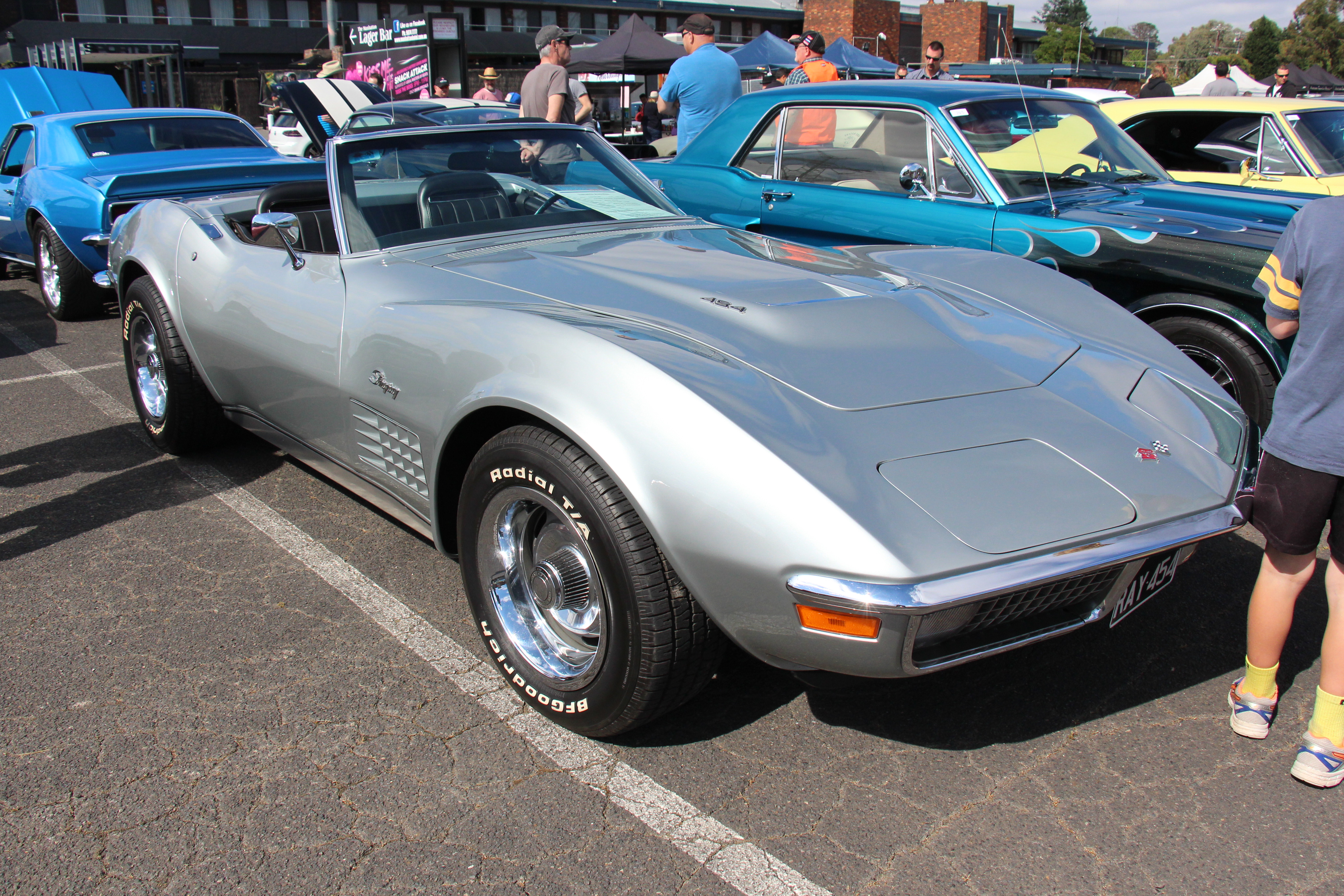
3. **1971 Chevrolet Corvette ZR2 454**For any serious collector or enthusiast of American performance cars, the 1971 Chevrolet Corvette ZR2 454 stands as a monumental achievement and one of the rarest jewels in the brand’s illustrious history. Its very existence is a testament to an era when Chevrolet was at the apex of pushing boundaries, even as stricter regulations loomed on the horizon.
What truly sets the ZR2 apart is its astonishing exclusivity. In 1971, only 12 ZR2 Corvettes were ever built, making this model not just rare, but one of the most exclusive iterations of the legendary Corvette nameplate. This extreme scarcity contributes significantly to its immense value and desirability in the collector market today, making it a true unicorn for many.
This particular Corvette was conceived with an audacious purpose: it was designed as a track-ready street car, a pure embodiment of Chevrolet’s daring spirit and an unwavering commitment to performance at a time when raw power was unequivocally king. Its creation represented a bold statement, a defiance of the burgeoning trends towards more subdued automotive experiences.
The value of such an exclusive and historically significant machine is reflected in its staggering price, currently standing at $785,000. This figure not only underscores its rarity but also its profound importance as a connection to a golden era of American automotive prowess, where audacious engineering and uncompromised performance were celebrated above all else.
Car Model Information: 2021 Lexus GX 460 Base
Name: Chevrolet Corvette (C4)
Caption: 1994 Chevrolet Corvette
Manufacturer: Chevrolet
Production: January 3, 1983 – June 20, 1996
ModelYears: 1984–1996
Predecessor: Chevrolet Corvette (C3)
Successor: Chevrolet Corvette (C5)
Class: Sports car
Assembly: Bowling Green, Kentucky
BodyStyle: targa top,Convertible (car)
Layout: Front-engine, rear-wheel-drive layout#FMR
Platform: GM Y platform
Wheelbase: cvt
Length: cvt
Width: cvt
Height: Coupe: {{cvt,46.7,in,mm
Transmission: automatic transmission,Overdrive (mechanics),GM 4L60-E transmission,ZF Friedrichshafen
Engine: {{cvt,350,cuin,L,1,Chevrolet small-block engine (first- and second-generation)#L83
Weight: cvt
Designer: Jerry Palmer
Related: Callaway Cars#C4 (RPO B2K Callaway Twin Turbo Corvette),Callaway Cars#C4 (RPO B2K Callaway Twin Turbo Corvette),Callaway Cars#C4 (RPO B2K Callaway Twin Turbo Corvette),Callaway Cars#C6 (Callaway SuperNatural Corvette),Callaway Cars#C4 (RPO B2K Callaway Twin Turbo Corvette)
Categories: 1990s cars, All articles with dead external links, All articles with unsourced statements, Articles with dead external links from November 2016, Articles with permanently dead external links
Summary: The Chevrolet Corvette (C4) is the fourth generation of the Corvette sports car, produced by American automobile manufacturer Chevrolet from 1983 until 1996. The convertible returned, as did higher performance engines, exemplified by the 375 hp (280 kW) LT5 found in the ZR1. In early March 1990, the ZR1 would set new records for the highest average speed over 24 hours at over 175 mph (282 km/h) and highest average speed over 5,000 miles at over 173 mph (278 km/h). With a completely new chassis, modern sleeker styling, and other improvements to the model, prices rose and sales declined. The last C4 was produced on June 20, 1996.
Get more information about: Chevrolet Corvette (C4)
Buying a high-performing used car >>>
Brand: Chevrolet Model: Corvette ZR2
Price: $44,105 Mileage: 50,292 mi.
Read more about: Unleashing the Legends: The 15 Most Valuable 1970s Cars Commanding Top Dollar Today
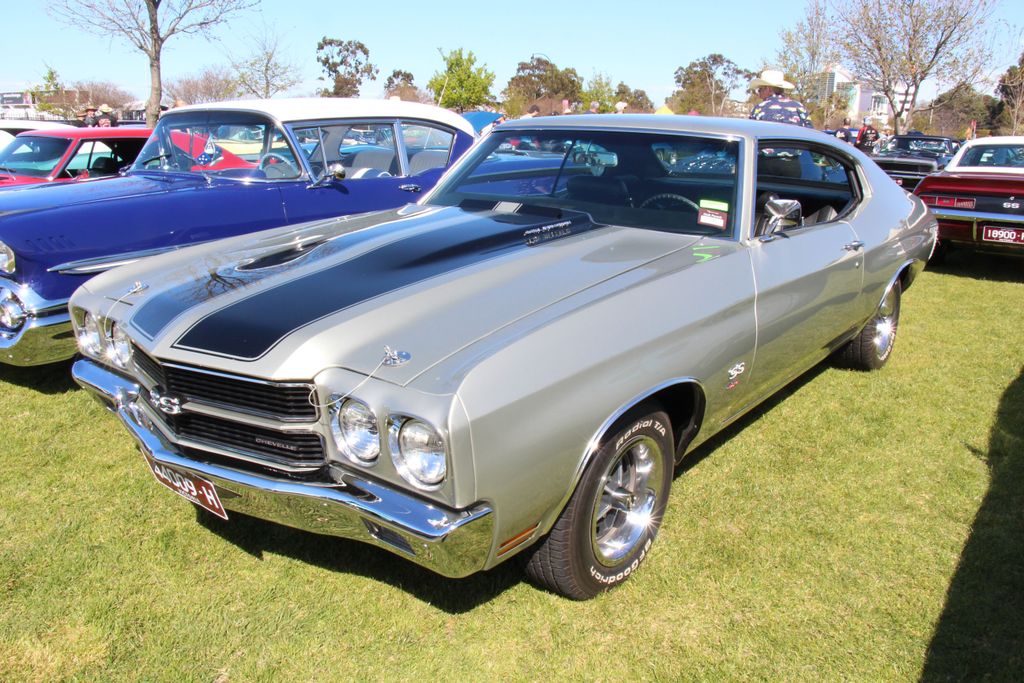
4. **1970 Chevrolet Chevelle SS-454 LS6**When buyers in 1970 demanded brute force and uncompromising power from their muscle cars, few vehicles answered that call with as much authority and style as the Chevrolet Chevelle SS 454. This wasn’t merely a car that looked great; it was an automotive titan, built to dominate the drag strip and command respect on any road it traversed, encapsulating the very essence of American muscle.
Under its long, imposing hood sat a truly legendary big-block V8 engine, displacing a massive 454 cubic inches. In its most potent LS6 configuration, this powerhouse was capable of packing an astounding 450 horsepower, a record-setting figure for its time that solidified its reputation as one of the most fearsome machines of the era. This raw power was paired with a glamorous Chevrolet styling that has become iconic.
The rarity of the LS6 configuration only adds to its allure and value. It’s estimated that less than 1% of Chevelles were built with this specific, high-performance engine, and today, only around 20 to 25 of these original LS6 cars are believed to remain. This extreme scarcity ensures that they are among the most sought-after muscle cars in existence.
Originally priced around $3,800, a well-preserved LS6 Chevelle now commands astonishing sums, with pristine examples changing hands for over $600,000 at auction. Enthusiasts prize the Chevelle’s potent combination of timeless Chevrolet aesthetics, undeniable muscle-car credentials, and that deep, resonant burble that can be felt right through the steering wheel, a symphony of power that defines the driving experience.
Car Model Information: 2021 Lexus GX 460 Base
Name: Chevrolet Chevelle
Caption: 1970 Chevrolet Chevelle SS 396 Sport Coupe
Manufacturer: Chevrolet
Production: 1963–1977
ModelYears: 1964–1977
Class: Mid-size
Platform: GM A platform (RWD)
Layout: FR layout
Successor: Chevrolet Malibu
Categories: 1970s cars, All articles needing additional references, All articles that may contain original research, All articles with specifically marked weasel-worded phrases, All articles with unsourced statements
Summary: The Chevrolet Chevelle is a mid-sized automobile that was produced by the Chevrolet division of General Motors (GM) in three generations for the 1964 to 1977 model years. Part of the GM A-body platform, the Chevelle was one of Chevrolet’s most successful nameplates. Body styles included coupes, sedans, convertibles, and station wagons. The “Super Sport” versions were produced through the 1973 model year and Lagunas from 1973 through to 1976.
After a four-year absence, the El Camino was reintroduced as part of the new Chevelle lineup in 1964.
From 1964 to 1969, GM of Canada sold a modified version of the Chevelle that included a Pontiac-style grille, and a LeMans instrument panel, marketed as the Beaumont.
The Malibu was the top-of-the-line model to 1972, and completely replaced the Chevelle nameplate starting with the redesigned, and downsized 1978 model year.
Get more information about: Chevrolet Chevelle
Buying a high-performing used car >>>
Brand: Chevrolet Model: Chevelle SS-454 LS6
Price: $44,105 Mileage: 50,292 mi.
Read more about: The End of an Era: 14 Iconic Muscle Cars That Roared into Automotive History But Faded from the Mainstream
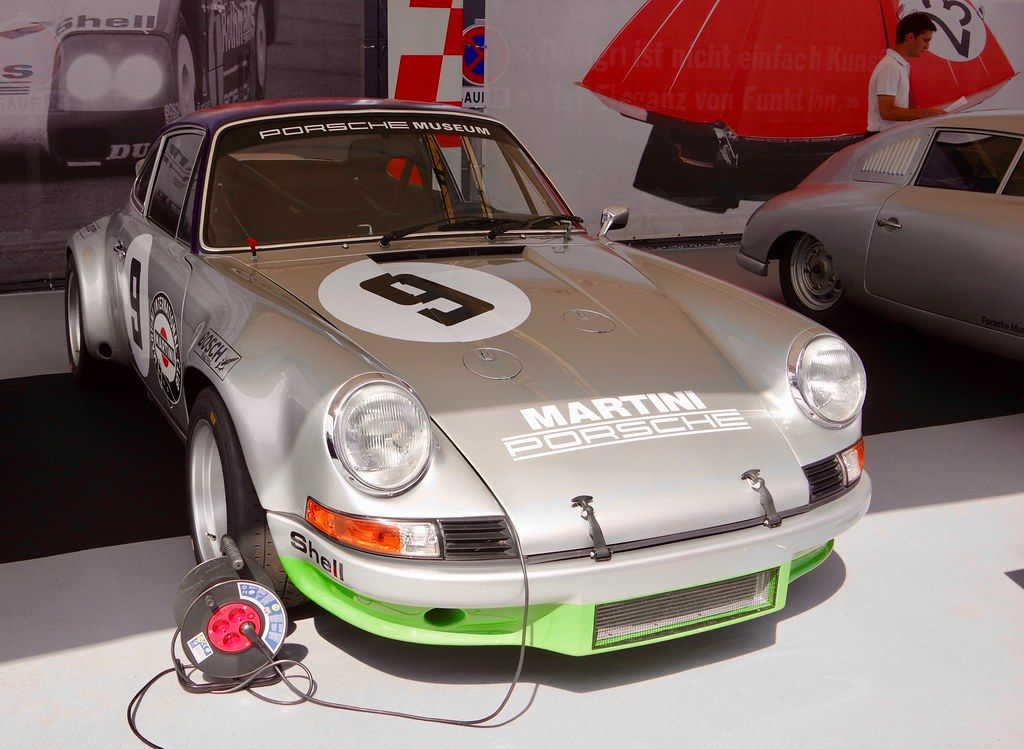
5. **1973 Porsche 911 Carrera RS**Any comprehensive list of desirable and valuable automobiles would feel incomplete without the inclusion of a Porsche 911, and in the context of the 1970s, the 1973 Porsche 911 Carrera RS stands as a true benchmark. Released with a design and performance philosophy firmly centered on racing, this particular model marks the final year of the first-generation 911, making it a pivotal piece of automotive history.
This iconic sports car was powered by a spirited 2.7-liter flat-six engine, producing a robust 210 horsepower, allowing it to deliver exhilarating performance characteristic of Porsche. Its exterior was instantly recognizable by its distinctive ducktail spoiler and wider rear wheels, features that not only enhanced its aggressive aesthetic but also contributed significantly to its aerodynamic and handling capabilities on the track.
The meticulous engineering extended to its race-focused suspension, which ensured the Carrera RS remained incredibly agile, whether navigating challenging track sessions or carving through spirited canyon drives. These attributes have cemented its reputation as one of the most respected and intensely sought-after 911s ever produced, a testament to its pure performance credentials and timeless appeal.
With an original price of approximately $13,000, the value of the 1973 Porsche 911 Carrera RS has appreciated dramatically over the decades, now commanding an impressive $554,883 in today’s market. Its blend of historical significance, unparalleled driving dynamics, and iconic design continues to make it a coveted prize for collectors worldwide, symbolizing Porsche’s enduring legacy in motorsport and road-going performance.
Car Model Information: 2021 Lexus GX 460 Base
Name: Porsche 911
Caption: The 1 millionth 911 produced on display at Volkswagen Group Forum, Berlin
Designer: Ferdinand Alexander Porsche
Manufacturer: Porsche
Production: September 1964 – present
Assembly: Stuttgart,Baden-Württemberg
Class: Sports car
BodyStyle: unbulleted list
Related: unbulleted list
Layout: Rear-engine design,rear-wheel drive
Predecessor: Porsche 356
Categories: 1970s cars, 1980s cars, 1990s cars, 2+2 coupés, 2000s cars
Summary: The Porsche 911 model series (pronounced Nine Eleven or in German: Neunelf) is a family of German two-door, high performance rear-engine sports cars, introduced in September 1964 by Porsche AG of Stuttgart, Germany. Now in its eighth generation, all 911s have a rear-mounted flat-six engine, and usually 2+2 seating, except for special 2-seater variants. Originally, 911s had air-cooled engines, and torsion bar suspension, but the 911 has been continuously enhanced, and evolved across generations. Though the 911 core concept has remained largely unchanged, water-cooled engines were introduced with the 996 series in 1998, and front and rear suspension have been replaced by Porsche-specific MacPherson suspension up front, and independent multi-link rear suspension.
The 911 has been raced extensively by private and factory teams, in a variety of classes. It is among the most successful competition cars. In the mid-1970s, the naturally aspirated 911 Carrera RSR won world championship races including Targa Florio and the 24 Hours of Daytona. The 911-derived 935 turbo also won the 24 Hours of Le Mans in 1979. Porsche won the World Championship for Makes in 1976, 1977, 1978, and 1979 with 911-derived models.
In a 1999 poll to determine the Car of the Century, the 911 ranked fifth — one of two in the top five that had remained continuously in production (the original Beetle remained in production until 2003). The one millionth example was manufactured in May 2017 and is in the company’s permanent collection.
Get more information about: Porsche 911
Buying a high-performing used car >>>
Brand: Porsche Model: 911 Carrera RS
Price: $44,105 Mileage: 50,292 mi.
Read more about: Unleashing the Legends: The 15 Most Valuable 1970s Cars Commanding Top Dollar Today
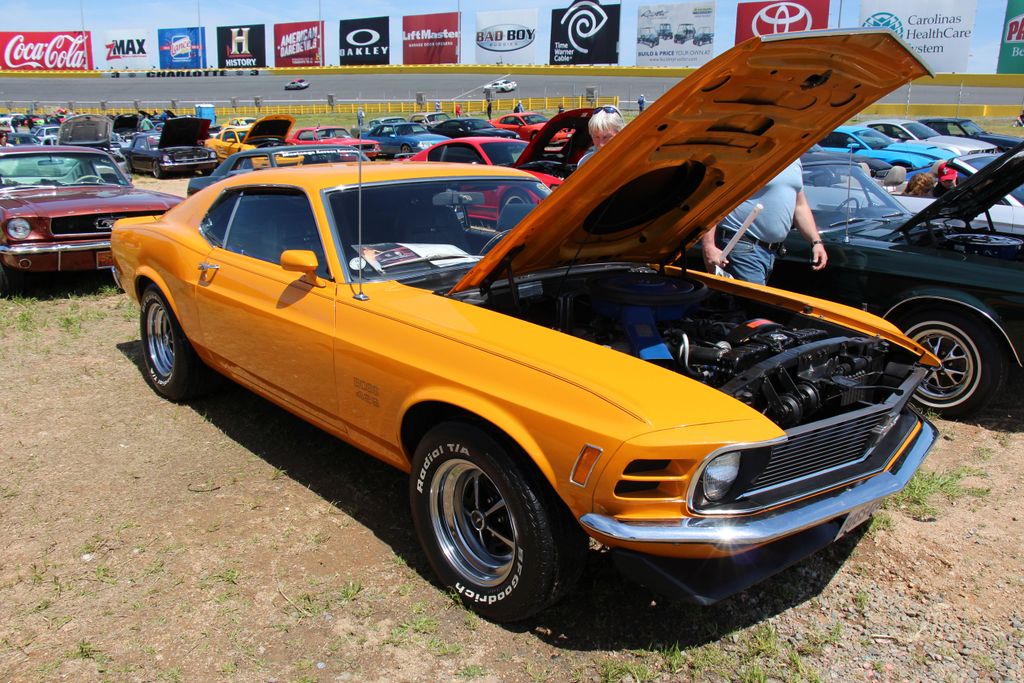
6. **1970 Ford Mustang Boss 429**For those who seek the quintessential American muscle car, the 1970 Ford Mustang Boss 429 represents nothing short of a holy grail. This particular Mustang embodies a specific, fiercely competitive era in motorsport, combining raw power with an unmistakable presence that has resonated with collectors for decades. It’s a car steeped in legendary status, yet one that had a surprisingly humble beginning.
The rarity of the Boss 429 is a primary factor in its sky-high value today; fewer than 500 examples were built in 1970. This extreme scarcity, combined with its profound connection to NASCAR’s glory days, positions it as one of the most coveted muscle cars ever produced. It was a vehicle born out of racing homologation rules, created to ensure Ford could compete with Chrysler’s dominant Hemi engines on the track.
Interestingly, despite its formidable capabilities and eventual legendary status, the Boss 429 wasn’t an instant hit when it was new. Ford’s primary focus was on meeting NASCAR engine requirements for competition, which unfortunately overshadowed effective marketing and led to relatively modest sales figures at the time. Its true value and iconic stature would only be recognized years later, long after it had left the showroom floors.
Today, the 1970 Ford Mustang Boss 429 commands an impressive price of $462,000. Its value is a clear reflection of its incredible rarity, its undeniable heritage in American motorsport, and its unyielding appeal to collectors who crave a tangible piece of the golden age of muscle cars. It remains a powerful symbol of Ford’s commitment to performance and a cherished artifact of automotive history.
Car Model Information: 1966 Ford Mustang Base
Name: Ford Mustang
Caption: 2024 Ford Mustang GT
Aka: Ford T5 (Germany)
Manufacturer: Ford Motor Company
Production: March 1964 – present
ModelYears: 1965–present
Class: Unbulleted list
BodyStyle: Unbulleted list
Layout: Front-engine, rear-wheel-drive layout
Categories: 1970s cars, 1980s cars, 1990s cars, 2+2 coupés, 2000s cars
Summary: The Ford Mustang is an American automobiles manufactured and marketed by Ford since 1964, as Ford’s longest nameplate in continuous production. Currently in its seventh generation, it is the fifth-best selling Ford car nameplate. The namesake of the “pony car” automobile segment, the Mustang was developed as a highly styled line of sporty coupes and convertibles derived from existing model lines, initially distinguished by its pronounced “long hood, short deck” proportions.
Originally predicted to sell 100,000 vehicles yearly, the 1965 Mustang became the most successful vehicle launch since the 1927 Model A. Introduced on April 17, 1964 (16 days after the Plymouth Barracuda), over 400,000 units were sold in its first year; the one-millionth Mustang was sold within two years of its launch. In August 2018, Ford produced the 10-millionth Mustang; matching the first 1965 Mustang, the vehicle was a 2019 Wimbledon White convertible with a V8 engine.
The success of the Mustang launch led to multiple competitors from other American manufacturers, including the Chevrolet Camaro and Pontiac Firebird (1967), AMC Javelin (1968), and Dodge Challenger (1970). It also competed with the Plymouth Barracuda, which was launched around the same time. The Mustang also had an effect on designs of coupes worldwide, leading to the marketing of the Toyota Celica and Ford Capri in the United States (the latter, by Lincoln-Mercury). The Mercury Cougar was launched in 1967 as a unique-bodied higher-trim alternative to the Mustang; during the 1970s, it included more features and was marketed as a personal luxury car.
From 1965 until 2004, the Mustang shared chassis commonality with other Ford model lines, staying rear-wheel-drive throughout its production. From 1965 to 1973, the Mustang was derived from the 1960 Ford Falcon compact. From 1974 until 1978, the Mustang (denoted Mustang II) was a longer-wheelbase version of the Ford Pinto. From 1979 until 2004, the Mustang shared its Fox platform chassis with 14 other Ford vehicles (becoming the final one to use the Fox architecture). Since 2005, Ford has produced two generations of the Mustang, each using a distinct platform unique to the model line.
Through its production, multiple nameplates have been associated with the Ford Mustang series, including GT, Mach 1, Boss 302/429, Cobra (separate from Shelby Cobra), and Bullitt, along with “5.0” fender badging (denoting 4.9 L OHV or 5.0 L DOHC V8 engines).
Get more information about: Ford Mustang
Buying a high-performing used car >>>
Brand: Ford Model: Mustang
Price: $32,991 Mileage: 98,811 mi.
Read more about: Roaring Engines and Timeless Tales: Our Favorite Muscle Car Memories That Will Burn Out In Your Brain!
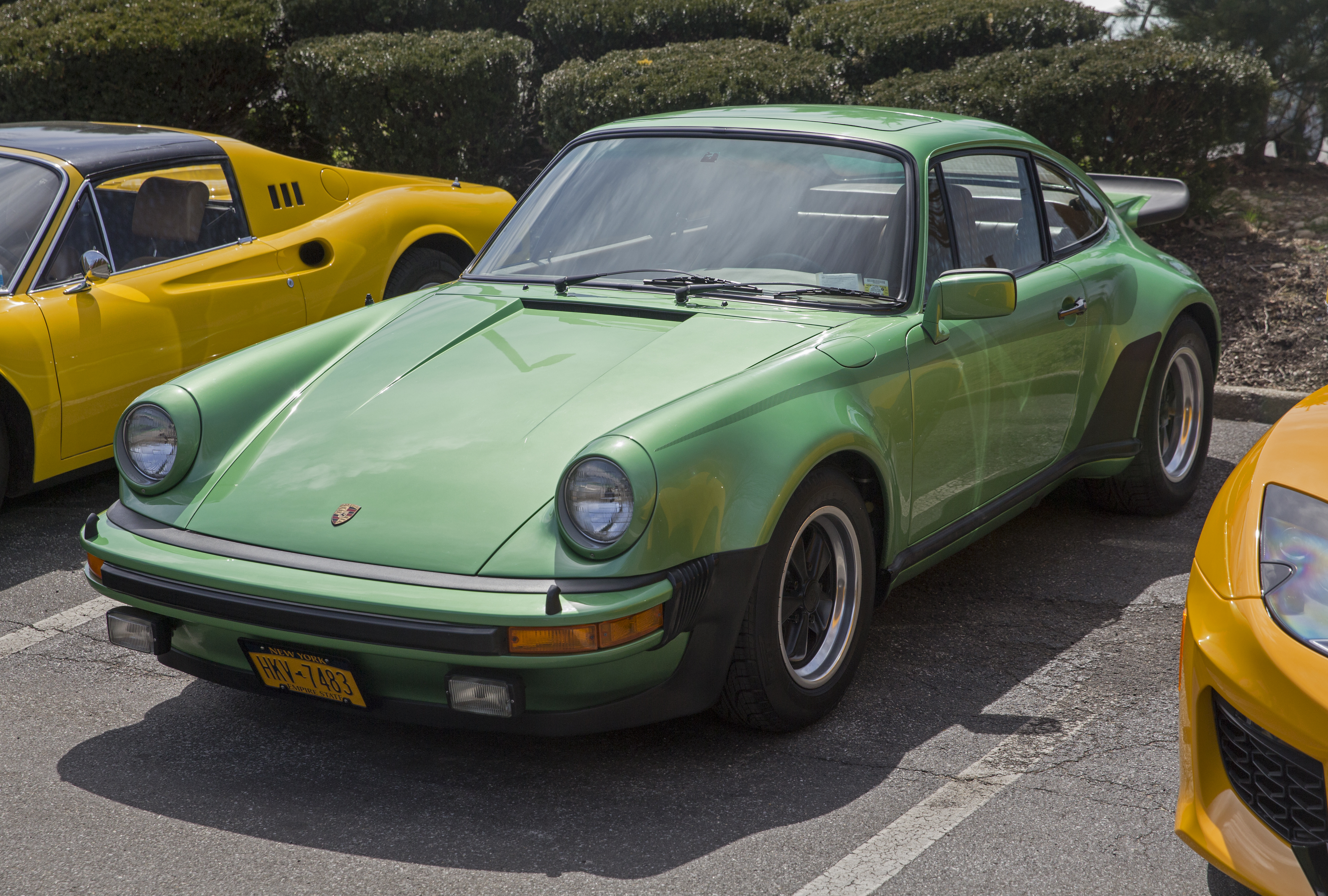
7. **1976 Porsche 911 Turbo 930**In late 1975, Porsche sent shockwaves through the sports-car world with the introduction of a revolutionary model: the 930 Turbo. This groundbreaking vehicle was the result of ingeniously integrating a turbocharger into their already proven 911 platform, forever changing the landscape of high-performance automobiles. It ushered in a new era of forced-induction exhilaration.
The 930 Turbo was a beast, generating roughly 260 horsepower, a formidable output for its time. It was instantly recognizable not just by its blistering speed, but also by its distinctive “whale-tail” spoiler. This iconic aerodynamic feature wasn’t merely for show; it was critically designed to keep the rear of the powerful car firmly planted on the tarmac, especially during high-speed maneuvers.
Drivers of the 930 Turbo were also treated to an unforgettable auditory experience: that characteristic spooling whistle under hard acceleration, a unique soundtrack that became synonymous with turbocharging and added to its mystique. This combination of raw power and sensory engagement defined the car’s formidable personality and appeal.
At its launch, the 930 Turbo commanded a price of about $26,000, which was close to double the cost of a naturally aspirated 911. Today, early examples of these legendary 930s regularly fetch six-figure sums, often soaring north of $300,000, with specific models listed at $371,116. Drivers continue to praise the intoxicating blend of raw punch, razor-sharp steering, and the unparalleled air-cooled charm that only a true 1970s Porsche can deliver, making it a perennial favorite for collectors seeking pure driving pleasure.
Our journey through the most coveted and valuable cars of the 1970s continues, as we delve into yet another seven automotive legends that have defied the odds and seen their values soar. These vehicles, each a testament to innovation and daring design, offer more than just a glimpse into a bygone era; they represent tangible pieces of history, engineering marvels, and cultural touchstones that continue to captivate collectors and enthusiasts worldwide. From rally-racing champions to track-honed luxury coupes, prepare to discover the next set of machines that prove the 1970s were truly a golden age for remarkable automobiles.
Car Model Information: 2021 Lexus GX 460 Base
Name: Porsche 911
Caption: The 1 millionth 911 produced on display at Volkswagen Group Forum, Berlin
Designer: Ferdinand Alexander Porsche
Manufacturer: Porsche
Production: September 1964 – present
Assembly: Stuttgart,Baden-Württemberg
Class: Sports car
BodyStyle: unbulleted list
Related: unbulleted list
Layout: Rear-engine design,rear-wheel drive
Predecessor: Porsche 356
Categories: 1970s cars, 1980s cars, 1990s cars, 2+2 coupés, 2000s cars
Summary: The Porsche 911 model series (pronounced Nine Eleven or in German: Neunelf) is a family of German two-door, high performance rear-engine sports cars, introduced in September 1964 by Porsche AG of Stuttgart, Germany. Now in its eighth generation, all 911s have a rear-mounted flat-six engine, and usually 2+2 seating, except for special 2-seater variants. Originally, 911s had air-cooled engines, and torsion bar suspension, but the 911 has been continuously enhanced, and evolved across generations. Though the 911 core concept has remained largely unchanged, water-cooled engines were introduced with the 996 series in 1998, and front and rear suspension have been replaced by Porsche-specific MacPherson suspension up front, and independent multi-link rear suspension.
The 911 has been raced extensively by private and factory teams, in a variety of classes. It is among the most successful competition cars. In the mid-1970s, the naturally aspirated 911 Carrera RSR won world championship races including Targa Florio and the 24 Hours of Daytona. The 911-derived 935 turbo also won the 24 Hours of Le Mans in 1979. Porsche won the World Championship for Makes in 1976, 1977, 1978, and 1979 with 911-derived models.
In a 1999 poll to determine the Car of the Century, the 911 ranked fifth — one of two in the top five that had remained continuously in production (the original Beetle remained in production until 2003). The one millionth example was manufactured in May 2017 and is in the company’s permanent collection.
Get more information about: Porsche 911
Buying a high-performing used car >>>
Brand: Porsche Model: 911 Turbo
Price: $44,105 Mileage: 50,292 mi.
Read more about: Unleashing the Legends: The 15 Most Valuable 1970s Cars Commanding Top Dollar Today
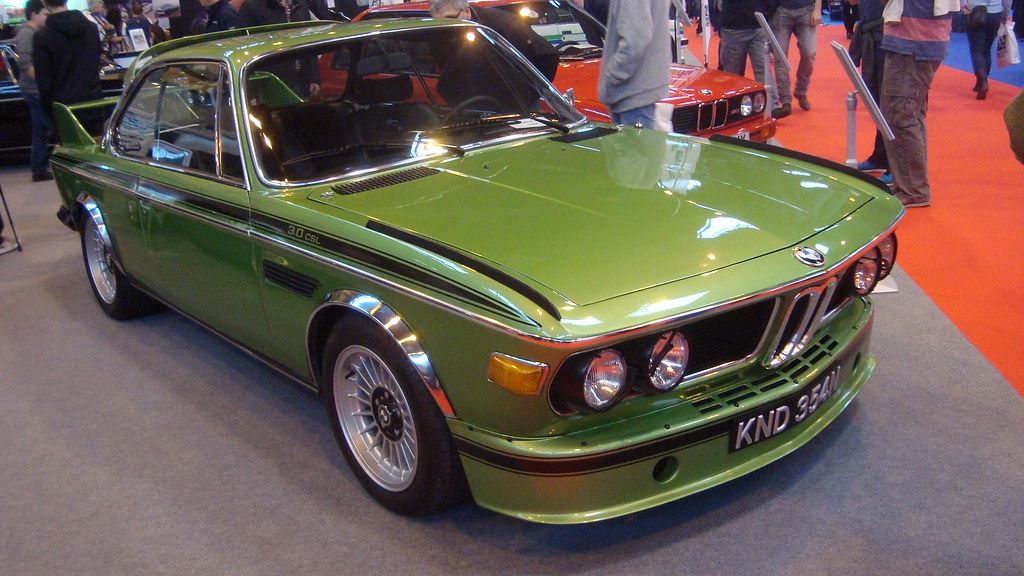
8. **1975 BMW 3.0 CSL “Batmobile”**Long before the term “Batmobile” became synonymous with superhero cinema, BMW bestowed this iconic nickname upon its formidable 3.0 CSL. This wasn’t a car designed for subtlety; it was conceived with a singular, aggressive purpose: to dominate European touring-car racing circuits. To achieve this, BMW engineered a vehicle that was a marvel of lightweight construction and aerodynamic prowess, pushing the boundaries of what a road-legal car could be.
The 3.0 CSL featured an array of race-ready hardware, including aluminum body panels and various lightened components that shaved precious pounds off its curb weight. Its instantly recognizable aesthetic was defined by aggressive fender flares, a colossal rear wing, and a distinctive roof-mounted spoiler. These aerodynamic enhancements, while striking in appearance, were crucial for maintaining stability and grip at high speeds, cementing its reputation as a serious competitor.
Original buyers fortunate enough to acquire this track-focused masterpiece paid approximately $13,500, a sum that translates to about $80,496 in today’s currency. However, its rarity, racing lineage, and distinctive styling have ensured a dramatic appreciation in value over the years. Today, these exceptional cars frequently command prices nearing $300,000 at auction, a clear indicator of their profound desirability.
The enduring appeal of the “Batmobile” lies in its masterful blend of competition-grade engineering and sculptural design. It stands as a pivotal model in BMW’s storied history, having played a crucial role in establishing the brand’s formidable motorsport legacy. For collectors, owning a 3.0 CSL is not just about acquiring a rare car; it’s about connecting with a crucial chapter in performance automotive history, a car that truly deserves its legendary status.
Car Model Information: 2021 Lexus GX 460 Base
Name: BMW E9
Manufacturer: BMW
Production: 1968–1975
Assembly: Rheine
Class: Grand tourer
Layout: Front-engine, rear-wheel-drive
BodyStyle: Coupé
Related: BMW New Six
Engine: BMW M30,straight-six engine
Wheelbase: Convert
Length: Convert
Width: Convert
Height: Convert
Predecessor: BMW New Class coupé
Successor: BMW 6 Series (E24)
Designer: Wilhelm Hofmeister (automobile designer)
Platform: BMW New Class
Categories: All articles with unsourced statements, Articles with short description, Articles with unsourced statements from January 2019, BMW model codes, BMW vehicles
Summary: The BMW E9 is a range of coupés produced by German automaker BMW from 1968 to 1975. Initially released as the 2800 CS model, the E9 was based on the BMW 2000 C / 2000 CS four-cylinder coupés, which were enlarged to fit the BMW M30 six-cylinder engine. The E9’s bodywork was built by Karmann.
As a racing car, the E9 was very successful in the European Touring Car Championship and the Deutsche Rennsport Meisterschaft, especially the 3.0 CSL homologation model.
The E9 range was replaced by the E24 6 Series.
Get more information about: BMW E9
Buying a high-performing used car >>>
Brand: BMW Model: 3.0 CSL
Price: $44,105 Mileage: 50,292 mi.
Read more about: Unleashing the Legends: The 15 Most Valuable 1970s Cars Commanding Top Dollar Today
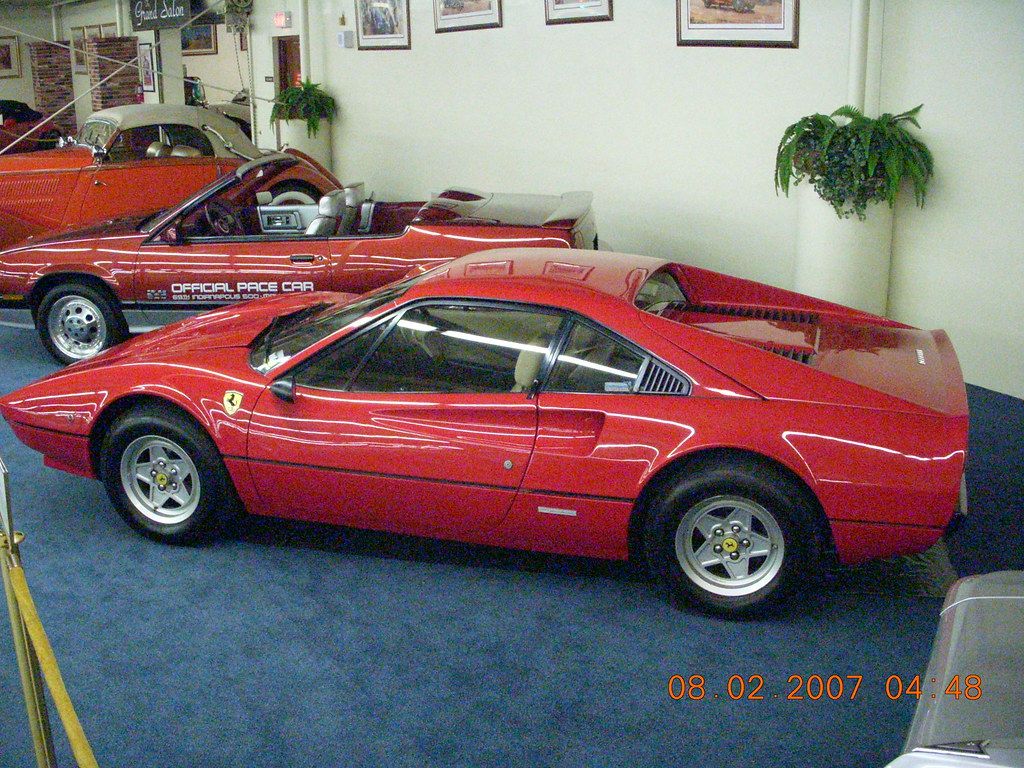
9. **1977 Ferrari 308 GTB**When one thinks of an iconic 1970s supercar, the image of a 1977 Ferrari 308 GTB often springs to mind. This model presented a truly rewarding driving experience, a fact noted by *Car and Driver* in a 1977 issue, where they praised its surprisingly comfortable cockpit that managed to not hinder the car’s exhilarating performance. It represented a perfect balance of driver engagement and Italian flair.
With its striking pop-up headlights and angular wedge shape, the 308 GTB possessed an iconic, modern appearance that positioned it well ahead of its time. This design language quickly made it a highly desirable machine. Underneath its sleek exterior lay a potent 3.0-liter mid-mounted V8 engine, producing a robust 240 horsepower, ensuring that its performance credentials were every bit as impressive as its aesthetic.
The exclusivity of the 308 GTB also contributes significantly to its collectability. While approximately 12,000 308s were produced in total, a mere 712 of these featured lightweight fiberglass bodies, making these specific variants exceedingly rare and sought-after. This limited production, especially of the fiberglass models, heightens its allure in the collector’s market.
Today, a 1977 Ferrari 308 GTB commands an impressive market value of $177,987. Its original price of $28,780, roughly $156,977 in today’s money, shows a solid appreciation that proves the enduring power of the Ferrari badge. As the context aptly notes, “the value lies in it being a Ferrari. That will always cost you, no matter what year,” highlighting the brand’s unwavering prestige and the sustained demand for its classic masterpieces.
Car Model Information: 2021 Lexus GX 460 Base
Name: Ferrari 308 GTB and GTS
Manufacturer: Ferrari
Production: 1975–1985
Assembly: Maranello
Designer: Leonardo Fioravanti (engineer)
Class: Sports car
BodyStyle: Berlinetta
Layout: Transverse engine,Rear mid-engine, rear-wheel-drive layout
Related: Ferrari GT4,Ferrari Mondial,Ferrari 288 GTO
Wheelbase: convert
Length: 4230 mm
Abbr: on
Width: 1720 mm
Height: 1120 mm
Predecessor: Dino 206 GT and 246 GT
Successor: Ferrari 328
Sp: uk
Caption: 1976 Ferrari 308 GTB
Categories: 1980s cars, All articles with dead external links, Articles with dead external links from August 2025, Articles with permanently dead external links, Articles with short description
Summary: The Ferrari 308 GTB berlinetta and targa-topped 308 GTS are V8 mid-engined, two-seater sports cars manufactured by the Italian company Ferrari from 1975 until 1985. The 308 replaced the Dino 246 GT and GTS in 1975 and was updated as the 328 GTB/GTS in 1985. The similar 208 GTB and GTS were equipped with a smaller, initially naturally aspirated and later turbocharged, two-litre engine, and were sold mainly in Italy.
Get more information about: Ferrari 308 GTB/GTS
Buying a high-performing used car >>>
Brand: Ferrari Model: 308 GTB
Price: $44,105 Mileage: 50,292 mi.
Read more about: The Cars That Became Stars: 12 Iconic Vehicles from 70s & 80s TV & Film

10. **1973 Pontiac Trans Am Super Duty**The 1973 Pontiac Trans Am Super Duty 455 stands as a defiant symbol of the American muscle car era, an audacious attempt to maintain high-performance standards even as stricter emissions regulations began to tighten their grip on the automotive industry. *RareCars.com* famously referred to it as the “end of the muscle car era,” capturing its significance as one of the last bastions of raw, uncompromised power from Detroit.
Despite the challenging regulatory climate, Pontiac managed to equip this Trans Am with a formidable 7.5-liter V8 engine, delivering a potent 290 horsepower. This was a remarkable feat for its time, demonstrating a fierce commitment to performance that many other manufacturers were forced to abandon. The Super Duty engine was a true high-performance marvel, designed to deliver exhilarating power and torque, making every drive an event.
To complement its defiant performance, the Trans Am Super Duty featured the instantly recognizable shaker hood, with its iconic scoop visibly protruding through the hood, signaling the power that lay beneath. And, of course, no 1970s Trans Am would be complete without the legendary “screaming chicken” hood decal, an aggressive graphic that became a cultural phenomenon and cemented its flashy appeal.
With an original price of $4,446, equivalent to about $33,301 in today’s money, the 1973 Pontiac Trans Am Super Duty has become a highly sought-after classic. Its current market value, standing at approximately $163,383, reflects its iconic status, extreme rarity, and its powerful connection to the golden age of American muscle. For collectors, it represents a cherished piece of history, an uncompromising machine that refused to go quietly into the night.
Car Model Information: 2021 Lexus GX 460 Base
Name: Pontiac Firebird
Caption: The second, third, and fourth generations of,the Pontiac Firebird Trans Am
Manufacturer: Pontiac (automobile)
Production: February 23, 1967 – August 30, 2002
ModelYears: 1967 – 2002
Class: Pony car,Muscle car
Platform: GM F platform
Related: Chevrolet Camaro
Layout: Front engine, rear-wheel-drive layout
Categories: 1970s cars, 1980s cars, 1990s cars, 2000s cars, All articles with dead external links
Summary: The Pontiac Firebird is an American automobile built and produced by Pontiac from the 1967 to 2002 model years. Designed as a pony car to compete with the Ford Mustang, it was introduced on February 23, 1967, five months after GM’s Chevrolet division’s platform-sharing Camaro. This also coincided with the release of the 1967 Mercury Cougar, Ford’s upscale, platform-sharing version of the Mustang.
The name “Firebird” was also previously used by GM for the General Motors Firebird series of concept cars in the 1950s.
Get more information about: Pontiac Firebird
Buying a high-performing used car >>>
Brand: Pontiac Model: Trans Am Super Duty
Price: $44,105 Mileage: 50,292 mi.
Read more about: Beyond the Mainstream: 14 Unforgettable ’70s Classic Cars That Shaped Automotive History for Enthusiasts
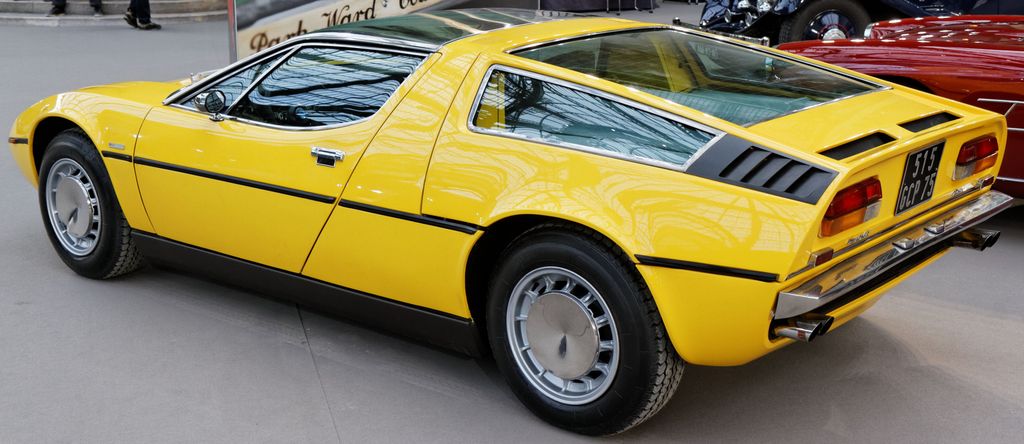
11. **1972 Maserati Bora**The 1972 Maserati Bora emerged as a rare and significant supercar of the 1970s, marking a pivotal moment for the Italian marque as its very first mid-engine road car. This design choice, emphasizing sportiness and luxury in equal measure, set a new trajectory for Maserati’s performance vehicles. Its distinct, wedge-shaped body, combined with a unique stainless steel roof panel, offered an artistic contrast and a visual appeal that was unmistakably Italian and ahead of its time.
Underneath its exquisite Giugiaro-penned bodywork, U.S. import versions of the Bora housed a powerful 4.9-liter V8 engine, capable of producing 310 horsepower. This robust powerplant propelled the car to 60 mph in a swift 6.5 seconds and allowed it to reach a top speed exceeding 170 mph. While it might not have claimed the title of the absolute fastest car of the decade, the meticulous attention to detail in its design and engineering ensured its enduring allure and unmatched sophistication.
The mid-mounted engine configuration not only contributed to the car’s balanced handling and performance but also underscored its focus on true supercar dynamics. This sophisticated layout, combined with its luxurious appointments, made the Bora a compelling package for discerning buyers who craved both speed and elegance. It was a machine that provided a refined yet exhilarating driving experience.
Rarity is a significant factor in the Bora’s enduring value. According to *Dyler*, only about 500 Maserati Bora cars made it to the United States between 1971 and 1979, making it a truly exclusive automobile. With an original price of $10,000, roughly $77,635 in today’s money, the 1972 Maserati Bora now commands a market value of $120,034. Its blend of historical significance, stunning design, and scarcity ensures its status as a prized possession for collectors worldwide.
Car Model Information: 1973 Maserati Bora 4.9 Coupe
Name: Maserati Bora
Manufacturer: Maserati
Production: 1971–1978 (Bora 4.7 L),(289 produced){{r,maserati47
Assembly: Modena
Class: Sports car
BodyStyle: coupé
Layout: Rear mid-engine, rear-wheel drive layout
Engine: unbulleted list
Transmission: Manual transmission
Wheelbase: 2600 mm
Abbr: on
Length: 4335 mm
Width: 1768 mm
Height: 1134 mm
Weight: convert
Related: Maserati Merak
Designer: Giorgetto Giugiaro
Sp: us
Categories: All articles needing additional references, All articles with unsourced statements, Articles needing additional references from July 2009, Articles with short description, Articles with unsourced statements from May 2020
Summary: The Maserati Bora (Tipo AM117) is a two-seat, rear mid-engine, rear-wheel drive sports car and grand tourer, manufactured by Maserati from 1971 to 1978. In common with other Maserati cars of the era, it is named after a wind, Bora being the wind of Trieste. The Bora was the company’s first mid-engined street car and ended Maserati’s reputation for producing fast but technologically out of date cars, also being the first Maserati with four wheel independent suspension. In contrast, competitor Lamborghini had first used full independent suspension in 1964.
Get more information about: Maserati Bora
Buying a high-performing used car >>>
Brand: Maserati Model: Bora
Price: $189,900 Mileage: 33,637 mi.
Read more about: Unvarnished Truth: 14 ‘Classic’ American Cars That Delivered Awful Driving Experiences

12. **1970 Dodge Challenger R/T with 440 Six Pack**The 1970 Dodge Challenger R/T with the formidable 440 Six Pack engine is a quintessential representation of ’70s muscle car flair, seamlessly blending iconic styling with brutal performance. This car didn’t just look the part; it delivered a visceral driving experience thanks to its unique triple-carburetor setup, which fed the massive 440 cubic-inch V8 engine, pumping out solid mid-400-horsepower numbers.
What made the “Six Pack” configuration truly special was its ability to provide drivers with instant throttle response, a characteristic highly prized by enthusiasts. This setup, along with a distinct engine note, gave the Challenger an unmistakable personality that continues to turn heads and ignite passion among automotive aficionados even today. It was a symphony of raw power and mechanical precision, perfectly suited for both street and strip.
The Challenger’s design itself was a masterpiece of the era, combining aggressive lines with a broad, imposing stance. It perfectly encapsulated the ethos of American performance cars of the early 1970s—bold, unashamedly powerful, and utterly captivating. Its ability to balance everyday drivability with genuine drag-strip credentials made it a versatile and highly desirable machine for the performance-hungry buyer.
Originally priced at around $3,535 when new, a figure equivalent to approximately $29,227 in today’s money, matching-numbers Six Pack Challengers have seen their value skyrocket. Pristine examples now routinely sell for over $120,000 in excellent condition, a testament to their enduring appeal and rarity. Collectors worldwide actively seek out these magnificent machines, eager to own a slice of Mopar legend.
Car Model Information: 2021 Lexus GX 460 Base
Name: Dodge Challenger (2008)
Production: 2008–2023
ModelYears: 2008–2023
Assembly: Brampton, Ontario
Designer: Brian Nielander,
Predecessor: ubl
Successor: Dodge Charger (2024)
Caption: 2017 Dodge Challenger R/T Scat Pack
Manufacturer: Dodge
Class: Muscle car
BodyStyle: notchback,coupe
Engine: unbulleted list
Abbr: on
Order: Chrysler Hemi engine#6.4 Apache / 392 Apache,V8 engine
Layout: Front-engine, rear-wheel-drive layout,Front-engine, all-wheel-drive layout
Transmission: Ultradrive#42RLE,5G-Tronic,Tremec TR-6060 transmission,ZF 8HP transmission
Wheelbase: cvt
Length: cvt
Width: cvt
Height: cvt
Categories: 2000s cars, 2010s cars, 2020s cars, All articles that are excessively detailed, All articles with style issues
Summary: The Dodge Challenger is a full-size muscle car that was introduced in early 2008 originally as a rival to the evolved fifth-generation Ford Mustang and the fifth-generation Chevrolet Camaro.
In November 2021, Stellantis announced that 2023 model year would be the final model year for both the LD Dodge Charger and LA Dodge Challenger, as the company will focus its future plans on electric vehicles rather than fossil fuel powered vehicles, due to tougher emissions standards required by the Environmental Protection Agency for the 2023 model year. Challenger production ended on December 22, 2023, and the Brampton, Ontario assembly plant will be re-tooled to assemble an electrified successor.
Get more information about: Dodge Challenger (2008)
Buying a high-performing used car >>>
Brand: Dodge Model: Challenger R/T
Price: $44,105 Mileage: 50,292 mi.
Read more about: Roaring Engines and Timeless Tales: Our Favorite Muscle Car Memories That Will Burn Out In Your Brain!

13. **1974 Maserati Indy**Representing the pinnacle of luxury, exclusivity, and Italian craftsmanship, the 1974 Maserati Indy holds a special place among desirable 1970s classics. This elegant grand tourer was named to honor Maserati’s impressive two victories at the iconic Indy 500, a name that immediately conveyed its blend of high performance and prestigious heritage. It was designed for a sophisticated clientele who demanded both exhilarating performance and an undeniable air of exclusivity.
With its sleek lines and timeless Italian design, the Indy presented a refined yet powerful aesthetic. It was a car that offered comfort and speed in equal measure, making long-distance touring an absolute pleasure. While its exact engine specifications from the context are not detailed, Maserati’s reputation for powerful V8 engines suggests it lived up to its sporting name, providing ample power for its intended grand touring purpose.
The rarity of the Maserati Indy further cements its desirability in today’s collector market. With only 1,104 units ever produced, it stands as a relatively exclusive model, ensuring that each surviving example is highly coveted. This limited production, coupled with its elegant design and rich Maserati pedigree, contributes significantly to its appreciating value and status as a collector’s item.
Today, the 1974 Maserati Indy commands a market price of $114,240. Its original price, while not explicitly stated for this specific model year in the provided context, would have reflected its luxurious positioning. The significant value it holds now is a clear indicator of its enduring appeal, its place in Maserati’s history, and its unwavering desirability among enthusiasts who appreciate the unique blend of Italian artistry and performance.
Car Model Information: 1974 Maserati Indy
Name: Maserati Indy
Manufacturer: Maserati
Production: 1969–1975,1,104 produced
Assembly: Modena
Designer: Virginio Vairo
Class: Grand tourer
BodyStyle: 2+2 (car body style),coupé
Layout: Front-engine, rear-wheel-drive layout
Engine: V8 engine,4.7 L Tipo AM 107/1 V8,4.9 L Tipo AM 107/49 V8
Transmission: ZF Friedrichshafen,Borg-Warner
Wheelbase: 2600 mm
Abbr: on
Length: 4740 mm
Width: 1760 mm
Height: 1220 mm
Weight: 1680 kg
Predecessor: Maserati Sebring
Sp: uk
Categories: 1970s cars, All articles needing additional references, All stub articles, Articles needing additional references from May 2020, Articles with short description
Summary: The Maserati Indy (Tipo AM116) is a four-seater fastback grand tourer produced by the Italian car manufacturer Maserati from 1969 to 1975. It was the first car produced by Maserati under Citroën ownership.
Get more information about: Maserati Indy
Buying a high-performing used car >>>
Brand: Maserati Model: Indy
Price: $74,980 Mileage: 50,538 mi.
Read more about: Illuminating Icons: A Deep Dive into 15 Classic Cars with the Most Jaw-Dropping Tail Light Designs
And with that, our exhilarating tour through the most valuable and iconic cars of the 1970s concludes. From the raw, unbridled power of American muscle cars to the sleek, futuristic designs of Italian supercars, this era truly left an indelible mark on automotive history. These machines, once rolling off assembly lines with far more modest price tags, have transformed into highly sought-after treasures, fetching eye-watering sums at auctions and in private sales. Their soaring values are not merely about rarity; they are a celebration of audacious engineering, unforgettable styling, and the sheer passion they continue to ignite in the hearts of collectors and enthusiasts. While acquiring these automotive jewels may be a dream for most, their stories, designs, and legacies will forever remind us of a golden age when cars were crafted not just to move, but to inspire, thrill, and define an era. It’s been a fantastic ride, and these magnificent 1970s classics prove that true automotive greatness only gets better with age.

